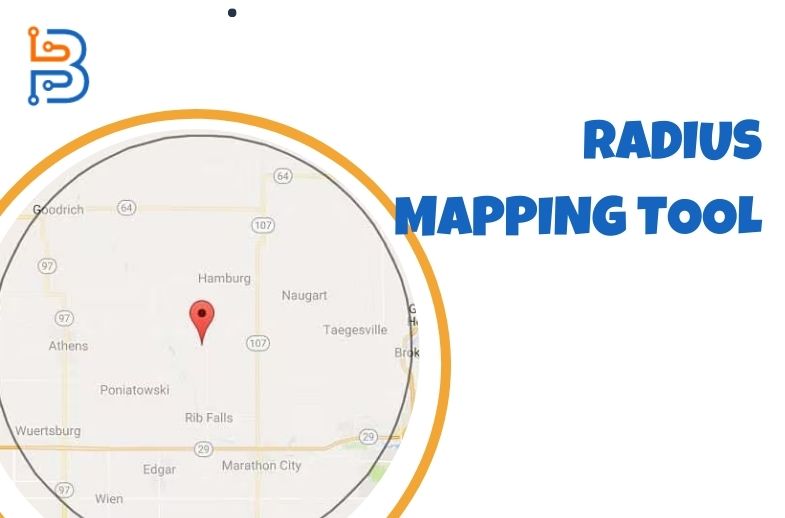What is a Radius Mapping Tool Used For?

Just about anyone can or will at some point be a radius tool user due to the applicability of the tool across professionals ranging from urban planners who want to assess the impact of infrastructure projects on surrounding areas to emergency services who rely on mapping tools to efficiently allocate resources during crises, ensuring timely response to incidents.
Therefore, whether for strategic decision-making or something more personal, radius mapping tools are the ones you will come across. Consider some of the key use cases below.
Geographical Analysis
For instance, a retail business looking to enhance its market presence and tailor its offerings to the local community can delve deeper into geographical analysis using a radius tool.
Beyond examining demographic characteristics, the business may seek to understand consumer behaviors, preferences, and spending patterns if they were to draw a radius on a Google Map.
This multifaceted analysis enables the identification of specific target demographics, allowing the business to customize its product selection, pricing strategies, and marketing campaigns. In some cases, a radius mapping tool can even aid in identifying potential collaboration opportunities with nearby businesses or uncovering untapped market niches that align with the unique characteristics of the surrounding area.
Geographical analysis aids in understanding local regulations and cultural norms, which is crucial for businesses to operate effectively and respectfully in a community.
Location-Based Searches
A second application of a radius is efficient route planning and resource identification. In a personal application, as a traveler in an unfamiliar city, you might be seeking a nearby coffee shop, breakfast spot or a cultural attraction within walking distance.
By employing the radius tool, users can easily delineate a specific distance from their current location and obtain a curated list of points of interest, businesses, or services situated within that radius. This functionality is particularly beneficial for travel planning, ensuring that visitors can explore their surroundings conveniently, make an itinerary and ultimately get the most out of their time in a new area. Or find a transportation alternative to get them where they need to go.

In case of emergencies, users can utilize radius tools to quickly locate nearby hospitals, pharmacies, or police stations, which is crucial for safety in unfamiliar places.
Some advanced radius tools may also provide information on local languages, cultural norms, or currency exchange services within the designated area, enhancing the travel experience.
This example demonstrates how a radius tool works both ways by connecting businesses and establishments with potential customers. Therefore, utilizing this tool from the perspective of a business is crucial, to say the least.
Proximity Planning
Enterprises looking to wow their clients and event planners organizing a corporate retreat may also use the tool to plan and assess the proximity of various points of interest or resources to a venue. For instance, a team may choose an event location with restaurants or hotels within a certain radius for attendees, giving them an idea of what driving or walking distance is.
Locating nearby hospitals, pharmacies, or emergency services is crucial for attendee safety. The radius tool helps in the quick identification of these facilities, ensuring immediate access in case of an emergency.
For corporate events, knowing the proximity of businesses and industry-related points of interest can facilitate networking opportunities or corporate visits as part of the event.
Event planners can identify potential local sponsors or collaborators within a certain radius, opening opportunities for local partnerships and community engagement.
Delivery or Service Areas
For businesses that offer delivery or on-site services, the radius tool can assist in defining and visualizing their service areas. This is crucial for businesses that need to specify which areas they serve and which they don’t, especially for those with limited resources or specific target markets.
By understanding the size and scope of the service area, companies can better allocate resources such as delivery vehicles and personnel. The tool helps estimate how many drivers or technicians are required based on the density of orders or service requests within different parts of the area.
The radius tool can be integrated with route planning software to optimize delivery routes. This ensures the shortest and most efficient paths are taken, saving time and fuel. It’s especially beneficial for businesses with multiple deliveries or service calls in the same area.
Accurate service area mapping aids in providing customers with realistic delivery time estimates. By analyzing the distances and typical traffic conditions within the radius, businesses can offer more accurate time slots for deliveries or service appointments.
By optimizing routes and service areas, businesses can also assess and minimize their environmental impact, contributing to more sustainable operations.

Streamlining Logistics and Supply Chain
Next on the list is logistics. Businesses are often quick to use radius mapping tools to help them strategically place distribution centers to ensure timely deliveries.
Additionally, the ability to determine the most efficient routes from the starting point becomes paramount in maximizing efficiency. The integration of real-time data allows for dynamic adjustments within the specified radius, enabling businesses to adapt swiftly to changing conditions and maintain a responsive and agile supply chain.
By understanding the service radius of each distribution center, businesses can better manage inventory levels. They can allocate stock more effectively based on the demand within each radius, reducing the risk of overstocking or stockouts.
As a business grows, radius tools can be used to plan expansions of the logistics network. This includes adding new distribution centers or expanding the service radius of existing ones to cover a larger market area.
Read Also: The Future of Software Industry
Summary
It is true that another tool to learn and implement in your business or day-to-day routine may sound like a learning curve you don’t want to tackle. However, the question remains: Should we learn a user-friendly tool that is becoming common in practice or try to plan location-specific activities without data? The question is yours.






